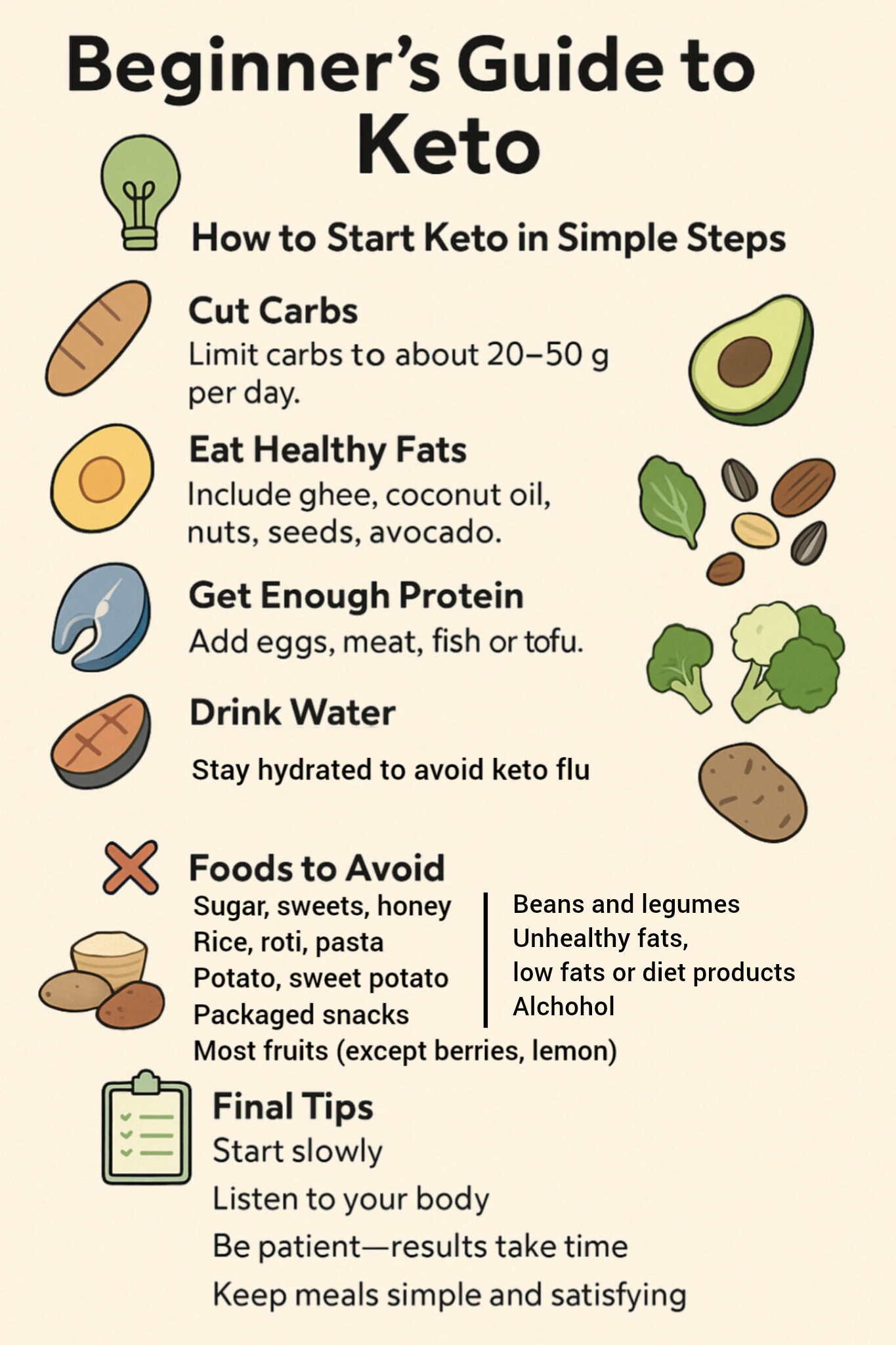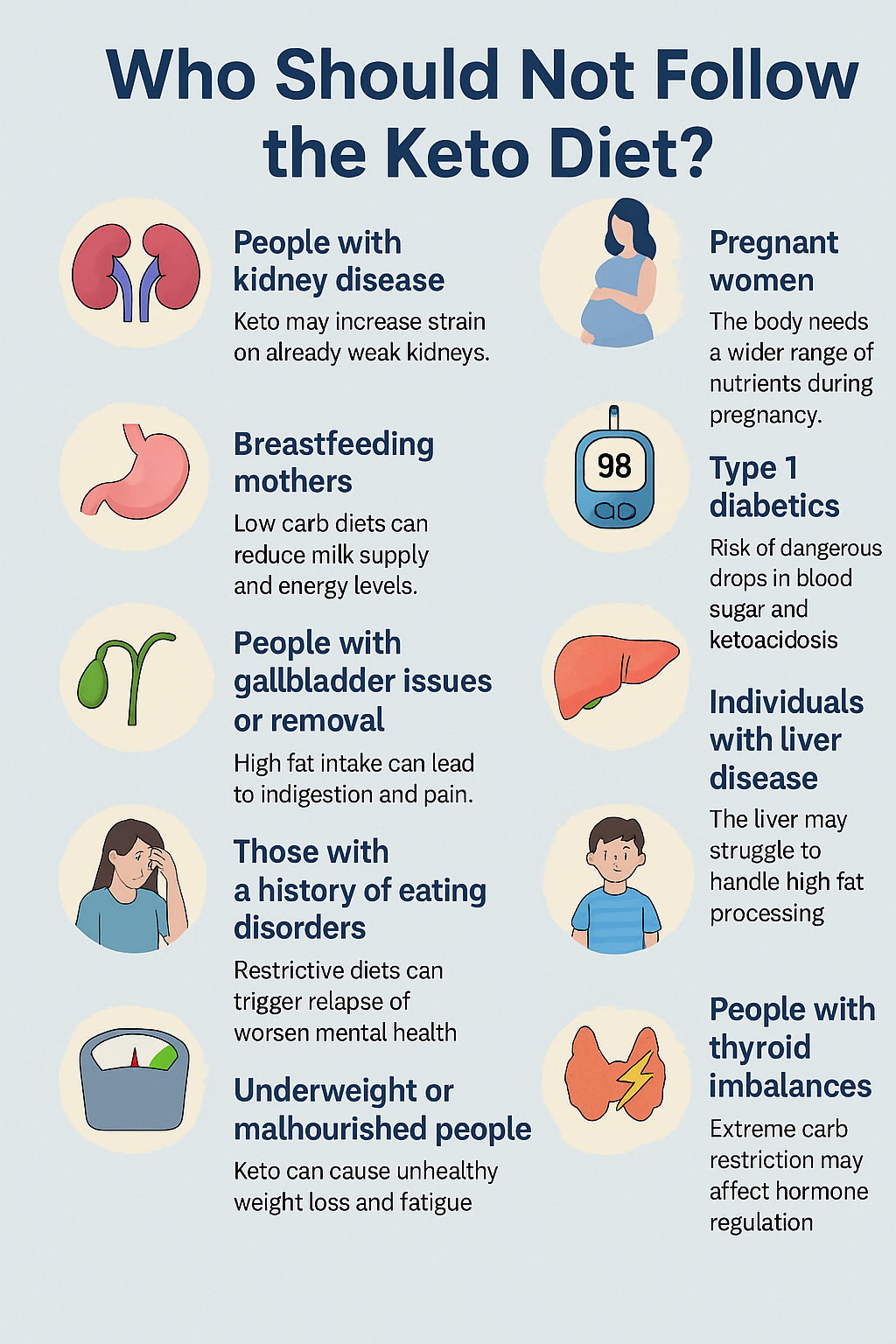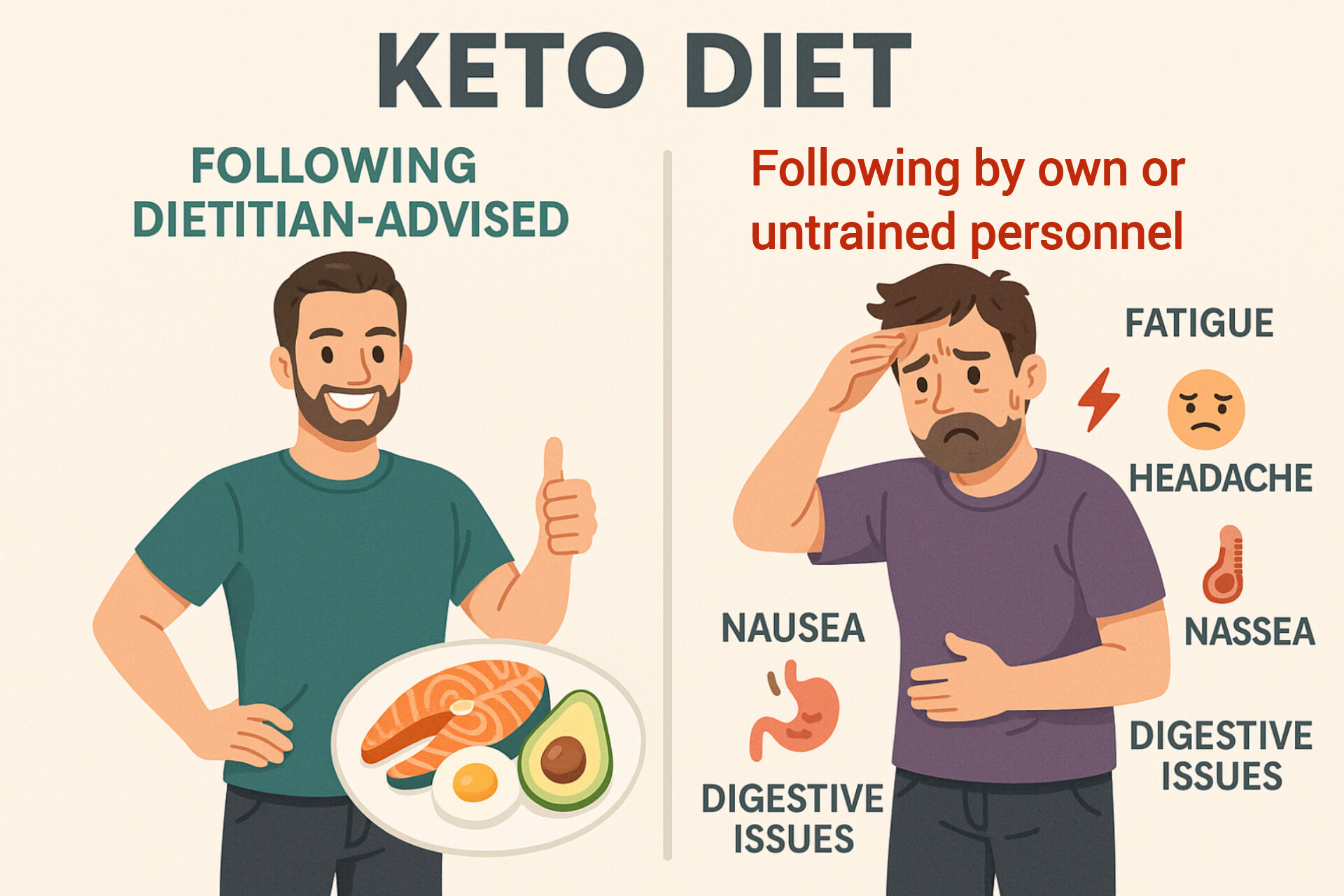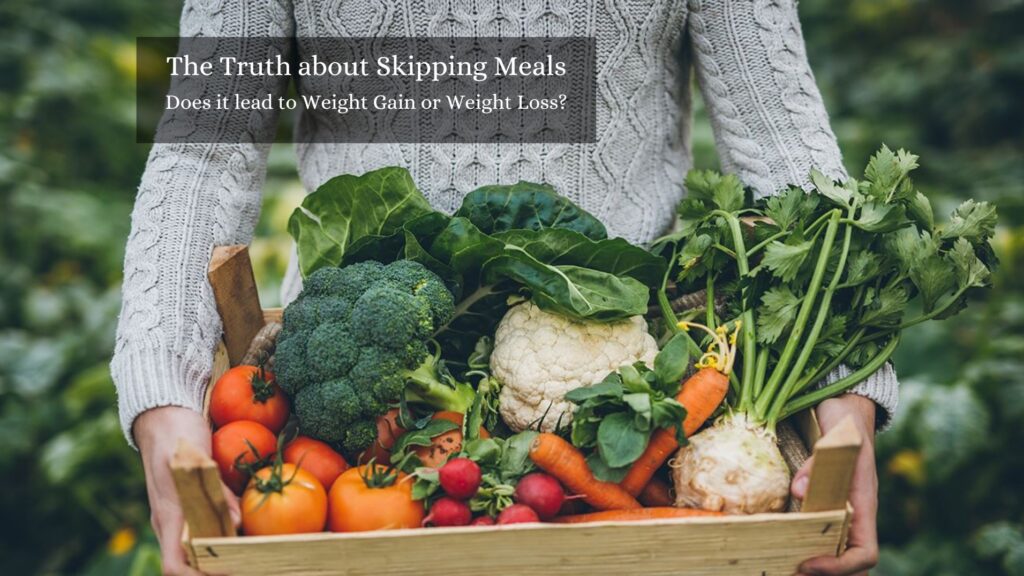By Nutriworld | Dt. Dipanwita Saha
Low-carb and keto diets are trending for quick weight loss and better energy—but they’re not one-size-fits-all. Many people jump in without knowing the science or side effects, which can backfire. If you’ve ever felt dizzy, confused about what to eat, or unsure whether keto is safe for you, you’re not alone. Let’s break it down simply and smartly, so you start right and stay healthy.

➢ What Is the Ketogenic Diet?
A ketogenic diet is a way of eating where you limit on carbohydrates and increase healthy fats, coined by Dr. Russell Wilder in the 1920s. This diet shift helps your body enter a natural state called ketosis, where it burns fat for energy instead of carbs. It’s a science-backed method often used for weight loss, better energy, and improved blood sugar control. The focus is on whole foods like eggs, meat, fish, nuts, cheese, and low-carb vegetables.
We can say “A ketogenic diet is a very strict type of low-carb diet”.
➢ Why people love it: The Ultimate benefits :
1. Burns Body Fat Quickly
Assists the body in burning fat for fuel—excellent for belly fat.
2. Regulates Blood Sugar
Less carbs = improved sugar and insulin regulation.
3. Increase Brain Power
Ketones power increased focus and more brilliant thinking.
4. Endurance Energy All Day
No crash from sugar, just consistent energy.
5. Decreases Inflammation
Can help joint pain, acne, and gut problems.
6. Heart-Healthy Benefits
Can increase good cholesterol and reduce triglycerides.
7. Simple, Real Food
Simple meals with clean, wholesome foods.

➢ What Most People Get Wrong About Keto Diet :
1. The “Keto Flu” is Real
Suddenly dropping carbs will leave you feeling weak, dizzy or irritable. This is your body adapting.
✅Solve it: Hydrate with water, add salt, and replenish electrolytes (magnesium, potassium).
2. It’s Not All Meat and Cheese
Keto is not a permission slip to indulge in meat or butter alone.
✅What works : Include healthy fats—avocados, nuts, seeds, olive oil—and lots of low-carb vegetables for balance.
3. Keto Isn’t Forever for Everyone
Going keto long-term without a strategy can result in vitamin deficiencies or hormone problems—particularly for women.
Healthcare professionals suggest taking medical supervision for long-term use of keto.
What Else People Miss
❌ Omitting veggies = fiber issues.
❌Forgetting hydration = headaches and tiredness.
❌Excess protein = could kick you out of ketosis.
❌No plan to come off keto = risk of weight gain.
➢ Side Effects Of Keto Diet :
1. Keto Flu
Headache, tiredness, and dizziness occurred when starting the diet.
2. Constipation
Low fiber intake can affect digestion if vegetables are limited.
3. Nutrient Deficiency
Skipping fruits, grains, and some veggies may cause Vitamin deficiencies.
4. Bad Breath
A common noticeable sign of ketosis; smells fruity or metallic.
5. Mood Swings or Fatigue
Especially early on, due to carb withdrawal or low minerals.
6. Hard to Maintain Long-Term
Social events, food variety, and sustainability can be challenging in that time.

Impotance of a Professional Guidance

[Always make sure to consult a Trained Dietitian before trying any kind of Diet Trend. ]
Bonus tips - (On-the-Go Keto Snacks Ideas)
- Carry boiled eggs, roasted nuts, or cheese cubes.
- Keep small packs of seeds or nut or butter in your bag.
- Cut cucumbers sticks for quick crunch.
- Keto bars as emergency bites(check ingredients carefully).
- Drink lemon salt water or black coffee when hunger hits.
Conclusion: The Key Is Balance, Not Extremes
Low-carb and keto diets can transform your energy and help manage weight or blood sugar—but only if done right. Know your limits, listen to your body, and get professional advice when needed. These diets are tools—not magic. Use them wisely, and you’ll build a healthy relationship with food that lasts for lifetime.
➢FAQs
1. Will I lose muscle on a keto diet?
Not if you eat enough protein and do resistance training or exercise. Your body burns fat for fuel, not muscle—if managed properly and guided by professionals.
2. Can I do keto as a vegetarian?
Yes. Use paneer, tofu, nuts, seeds, low-carb veggies, and healthy oils. Plant-based keto is totally possible with planning.
3. How long does it take to enter ketosis?
Usually 2–7 days after starting a strict low-carb intake. It varies based on your metabolism, activity, and previous diet.
4. Is keto safe for diabetics?
In many cases, yes—especially for Type 2 diabetes. But always consult your doctor, as medication doses might need adjusting.
5. What are signs that keto isn't working for me?
Extreme fatigue, irritability, hair loss, or digestive issues could mean the diet needs adjusting—or isn’t right for you long term.
6. Is the Ketogenic Diet Safe for Everyone?
No. this works for many, but it’s not safe for everyone—especially if you have health issues or are pregnant. Best to consult with a doctor or dietitian before starting.
By, Priyanka Das Nutrition Content Writing Intern [ Nutri World ]


